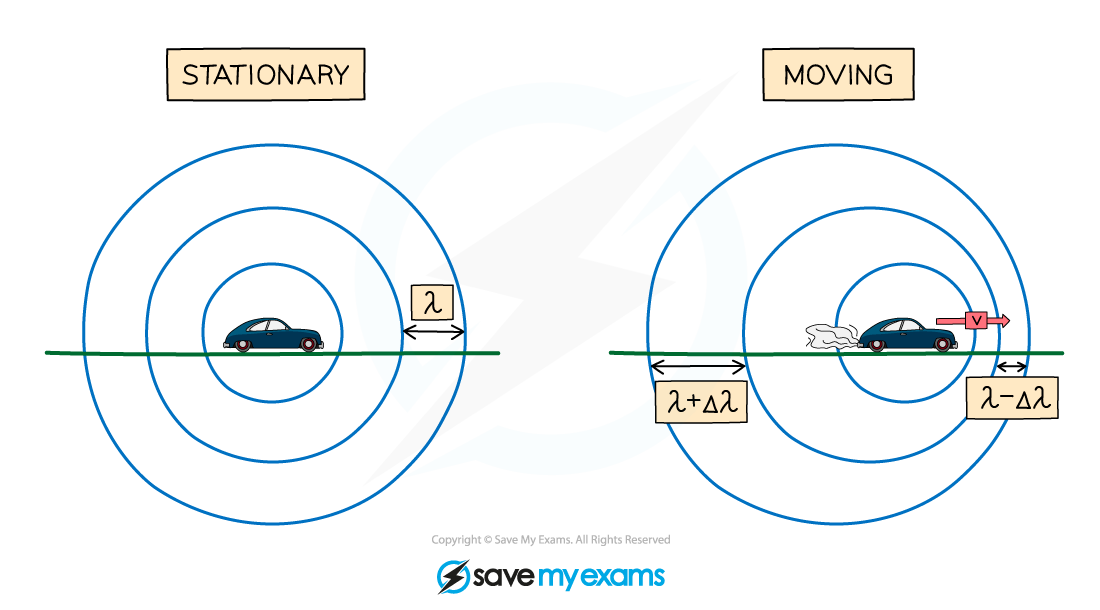The Doppler Effect
- When a source of sound, such as the whistle of a train or the siren of an ambulance, moves away from an observer:
- It appears to decrease in frequency, i.e. it sounds lower in pitch
- Although, the source of the sound remains at a constant frequency
- This frequency change due to the relative motion between a source of sound or light and an observer is known as the Doppler effect (or Doppler shift)
- When the observer and the source of sound (e.g. ambulance siren) are both stationary:
- The waves appear to remain at the same frequency for both the observer and the source

Stationary source and observer
- When the source starts to move towards the observer, the wavelength of the waves is shortened
- The sound, therefore, appears at a higher frequency to the observer

Moving source and stationary observer
- Notice how the waves are closer together between the source and the observer compared to point P and the source
- This also works if the source is moving away from the observer
- If the observer was at point P instead, they would hear the sound at a lower frequency due to the wavelength of the waves broadening
- The frequency is increased when the source is moving towards the observer
- The frequency is decreased when the source is moving away from the observer
Worked Example
A cyclist rides a bike ringing their bell past a stationary observer. Which of the following accurately describes the doppler shift caused by the sound of the bell?
ANSWER: D
-
- If the cyclist is riding past the observer, the wavelength of sound waves are going to become longer
- This rules out options A and C
- A longer wavelength means a lower frequency (from the wave equation)
- Lower frequency creates a lower sound pitch
- Therefore, the answer is row D
- If the cyclist is riding past the observer, the wavelength of sound waves are going to become longer
Representing The Doppler Effect
- Wavefront diagrams help visualize the Doppler effect for moving wave sources and stationary observers

Wavefronts are even in a stationary object but are squashed in the direction of the moving wave source
- A moving object will cause the wavelength, λ, (and frequency) of the waves to change:
- The wavelength of the waves in front of the source decreases (λ – Δλ) and the frequency increases
- The wavelength behind the source increases (λ + Δλ) and the frequency decreases
- This effect is known as the Doppler effect or Doppler shift
- Note: Δλ means 'change in wavelength'
- The Doppler shift is observed by all waves including sound and light
- When the source starts to move towards the observer, the wavelength of the waves is shortened
- For sound waves, sound, therefore, appears at a higher frequency to the observer
- For light waves, the light shifts towards blue due to its higher frequency

Representing red-shifted and blue-shifted light
- When the source starts to move away from the observer, the wavelength of the wave broadens
- For sound waves, sound therefore appears at a lower frequency to the observer
- For light waves, the light shifts towards red due to its lower frequency
- When the source starts to move towards the observer, the wavelength of the wave shortens
- For sound waves, sound therefore appears at a higher frequency to the observer
- For light waves, the light shifts towards blue due to its higher frequency
- This is because red light has a longer wavelength than blue light
